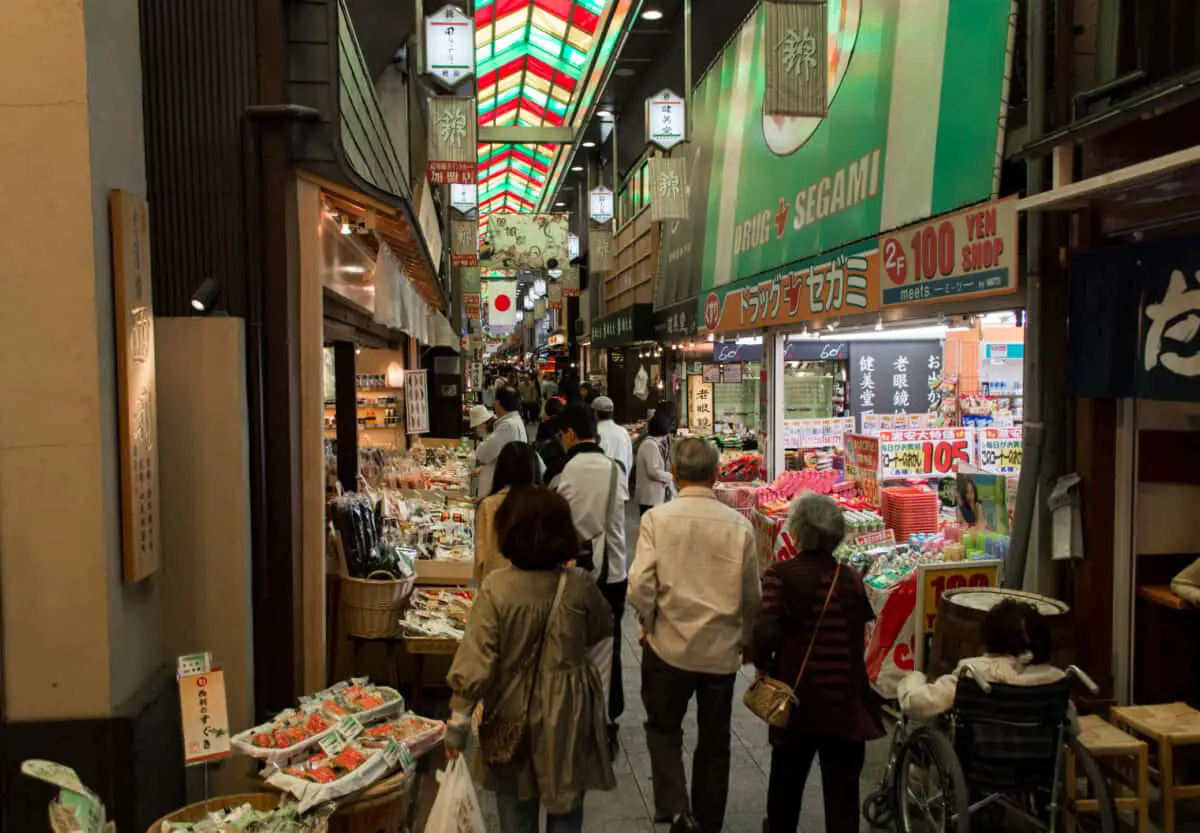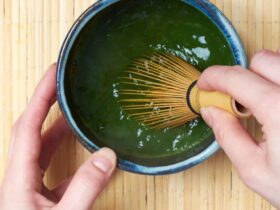Nishiki Market (Nishiki Ichiba) is a five-block-long shopping street lined with over a hundred stores and eateries. This bustling retail market, also known as “Kyoto’s Kitchen,” specializes in all things food-related, such as fresh seafood, fruit, cutlery, and cookware, and is a fantastic place to buy seasonal foods and Kyoto specialties like Japanese sweets, pickled items, dried fish, and sushi.
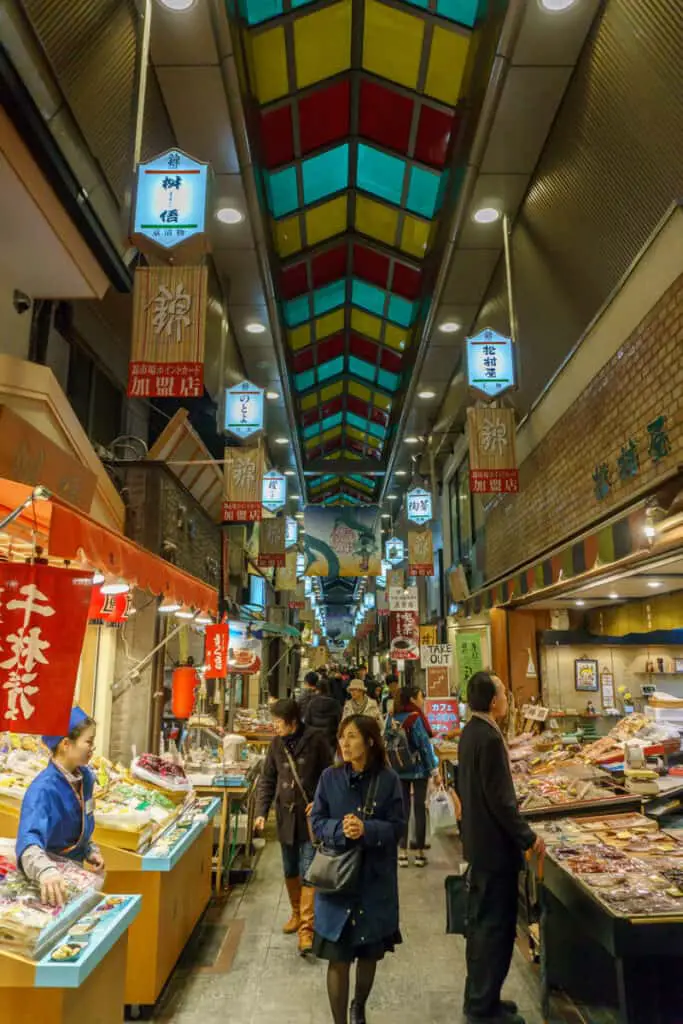
The Basics
Nishiki Market has a pleasant but bustling ambiance that welcomes visitors who want to sample the wide range of Kyoto’s culinary pleasures. The shops ranging in size from small narrow booths to large two-story establishments may be found throughout the market.
Almost everything sold at the market is locally produced and procured, and most specialize in a certain type or category of food.
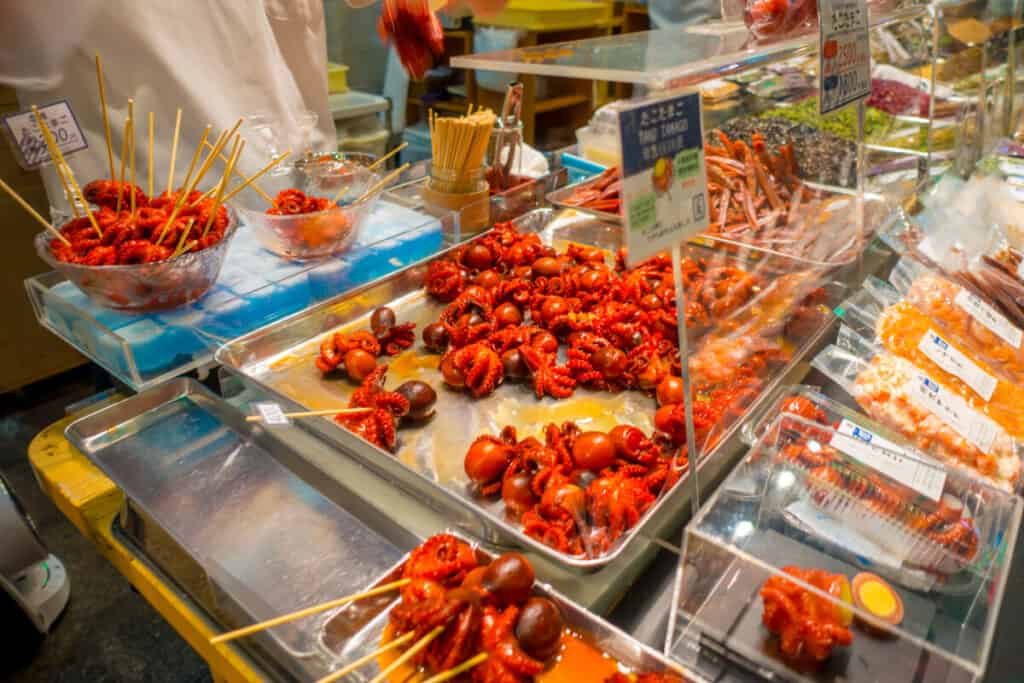
Some shops offer free samples or sell sample dishes and skewers that can be eaten right away. There are also a few tiny eateries and food kiosks that serve ready-to-eat meals.
A handful are sit-down restaurants or cafes, whereas others are only a couple of stools and a bar.
They mainly specialize in one sort of food and are frequently associated with a store that sells that same type of food. It’s a poor idea to eat while walking because it’s considered bad manners.
The History
The selling of fish began in the area as early as 782, thanks to the cool groundwater present at the site, which allowed fish and other meats to be kept fresh in a location close to the Kyoto Imperial Palace.
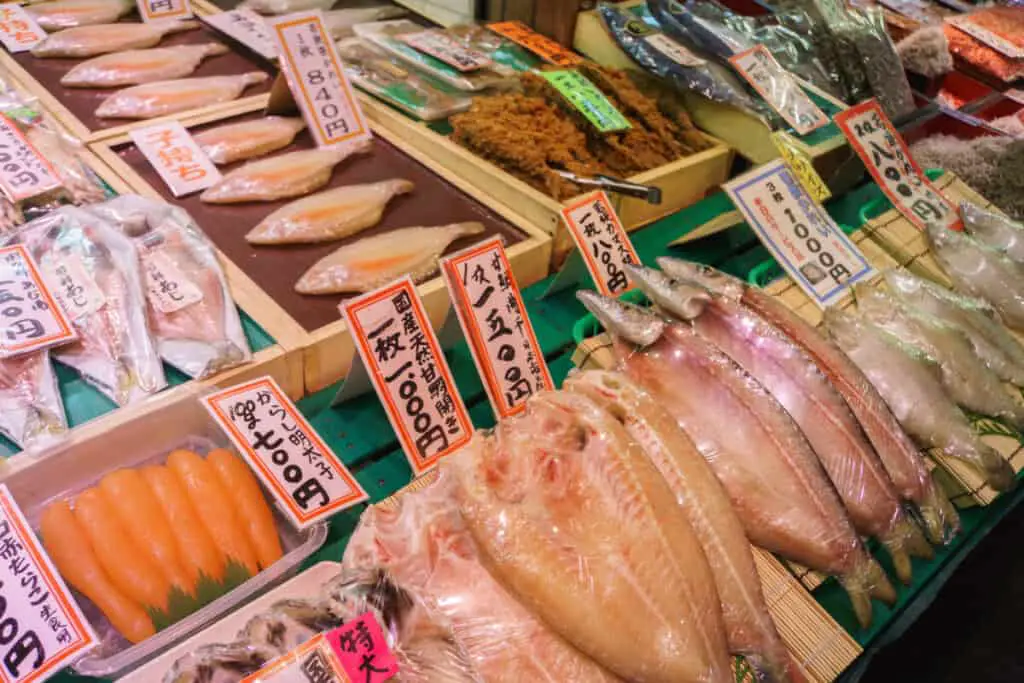
The area obtained official authorization from the Bakufu government to conduct fish sales for the first time in 1615, and this was the first step toward becoming the renowned market it is today.
Due to intense competition between establishments, the number of shops was decreased to only seven in 1883, following the Meiji Restoration.
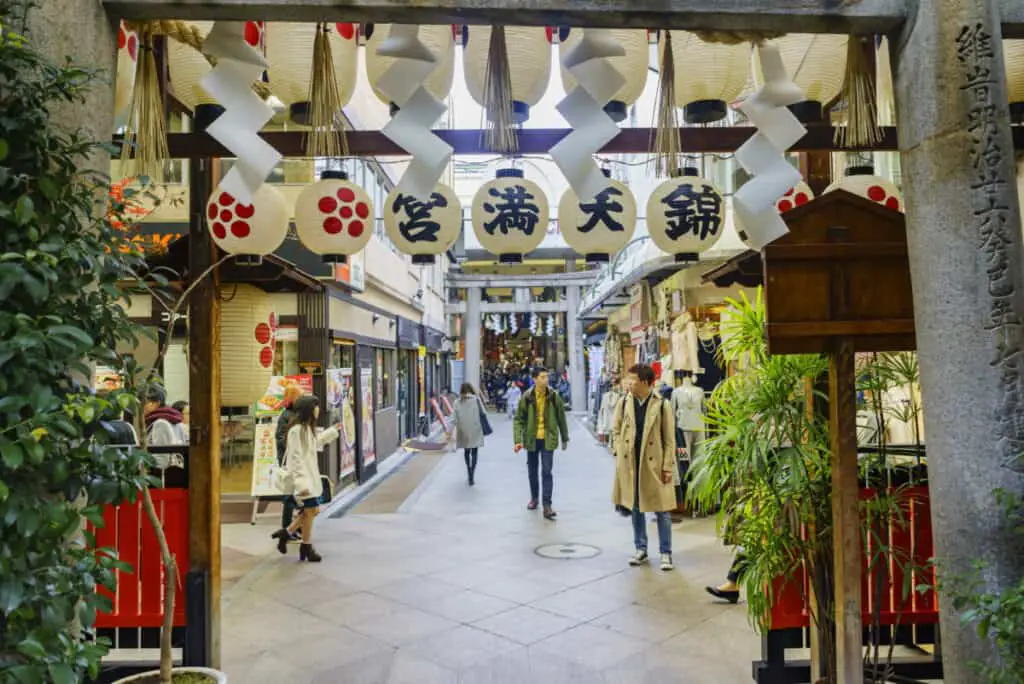
In 1911, a new organization was formed to promote the market as a venue to buy and sell fish and seafood. As a result, the market regained its vigor.
The Kyoto Central Wholesale Market opened in 1927, and many merchants from the Nishiki Market relocated there.
A new organization fostered the opening of stores selling fruits, vegetables, meats, and other food items in 1928. From this moment forward, the market became known as “Kyoto’s kitchen.”
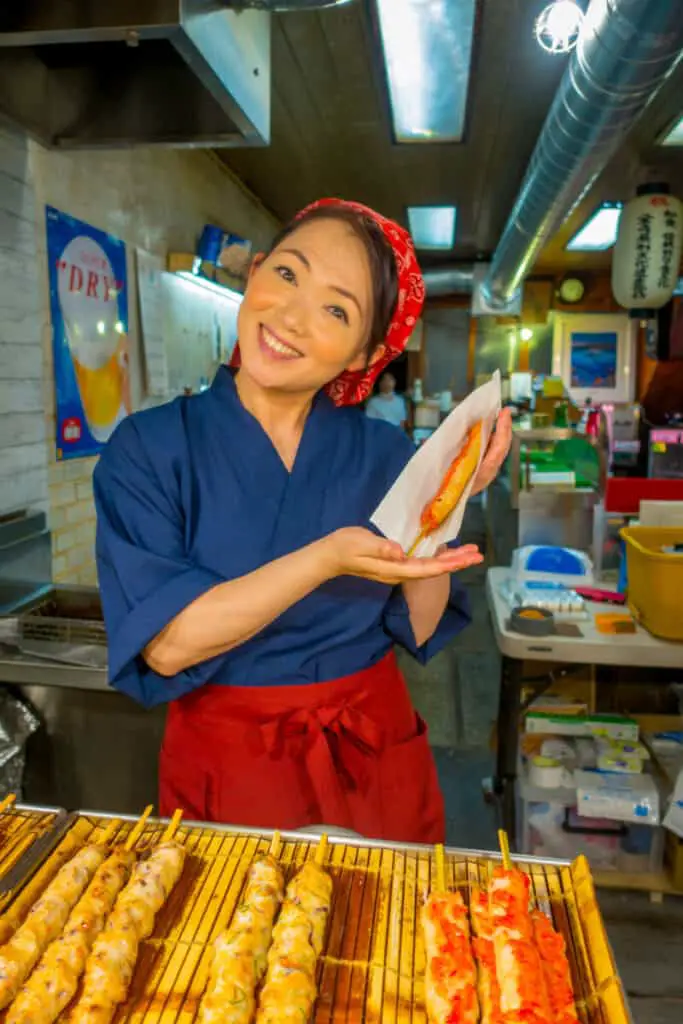
The current cobblestone floor was constructed in 1984, and the arcade canopy was erected in 1993. “Nishiki Market” was registered as a trademark in 2005.
Hours of Operation
The food market operates on a set schedule. It opens at 10 a.m. and closes at 6 p.m. If at all feasible, schedule it during the middle of the day—ideal times for visiting are for lunch or an early dinner, as well as grabbing a bite to eat while passing through.
The street market is narrow, in keeping with the traditional shotengai (shopping street) character. The brilliantly colored roof lets some light in, but it largely gives the street a sensation of the perpetual evening—despite the fact that it isn’t a night market.
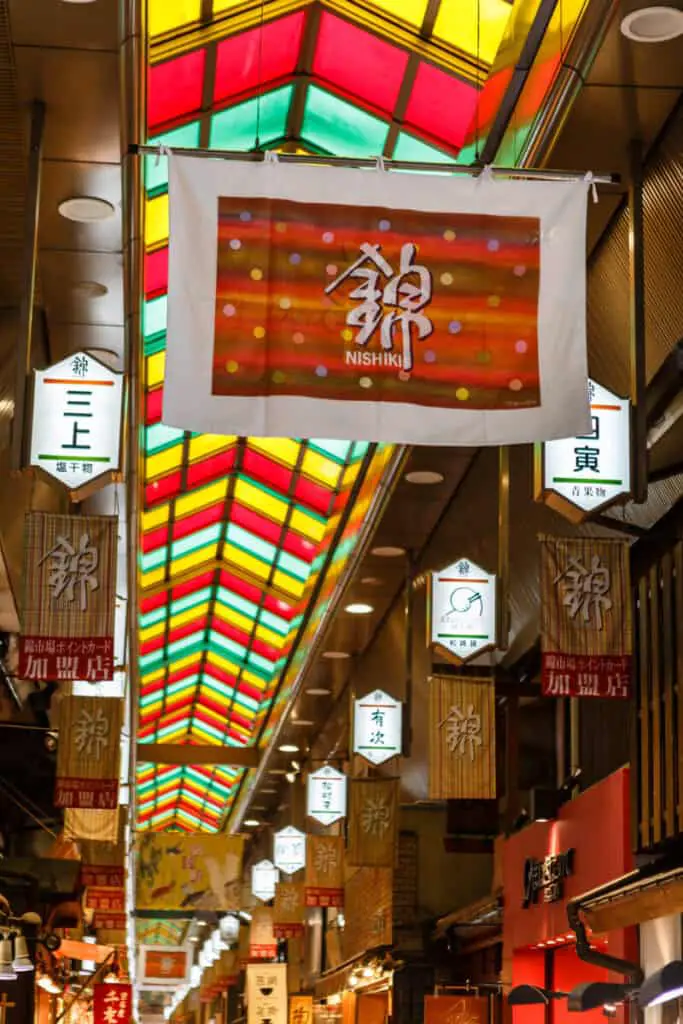
Although eating on the street is frowned upon in Japan, there are exceptions. Meat and fish skewers are commonly sold in more relaxed areas and at Nishiki Market as well.
Nishiki Market: What to Eat
Taste is one of the best ways to discover Nishiki Ichiba (Market), and there are lots of opportunities to do so. Some of the treats will be familiar to you, while others will be unfamiliar and unusual.
There’s plenty here for a culinary adventure, depending on how daring you are, so stroll and snack as you please. If the market is busy, several merchants include tiny seating spaces where you can take a rest while you eat. Here are some of the best foods to sample in Nishiki Market.
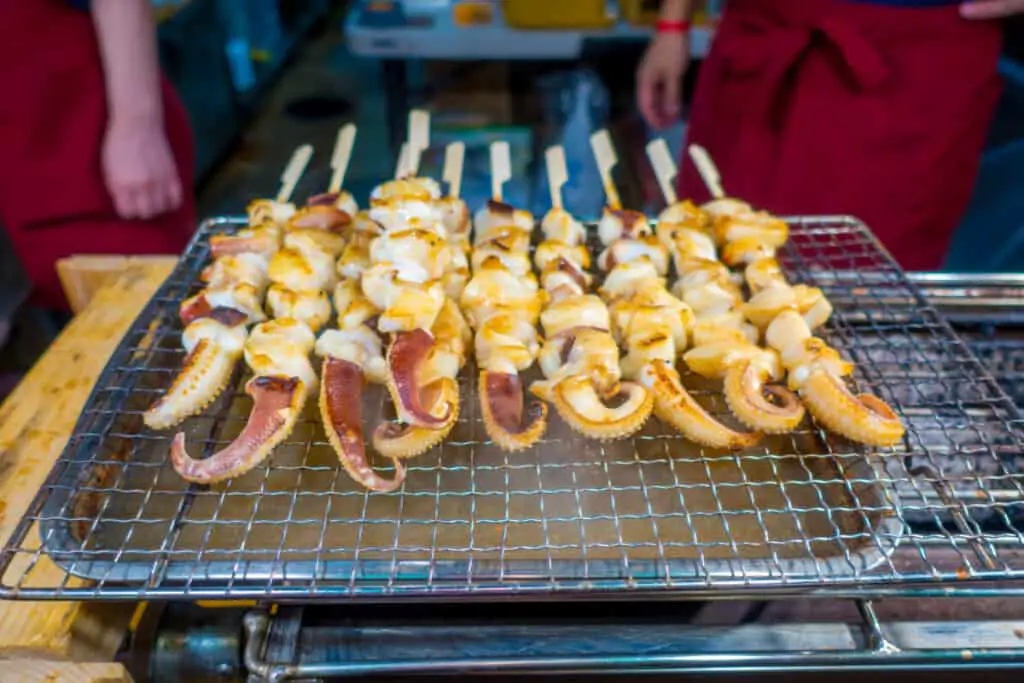
Tako tamago
A quail’s egg is hidden inside the head of a little baby octopus. The candied confection on a skewer is a unique blend of salt and sweetness.
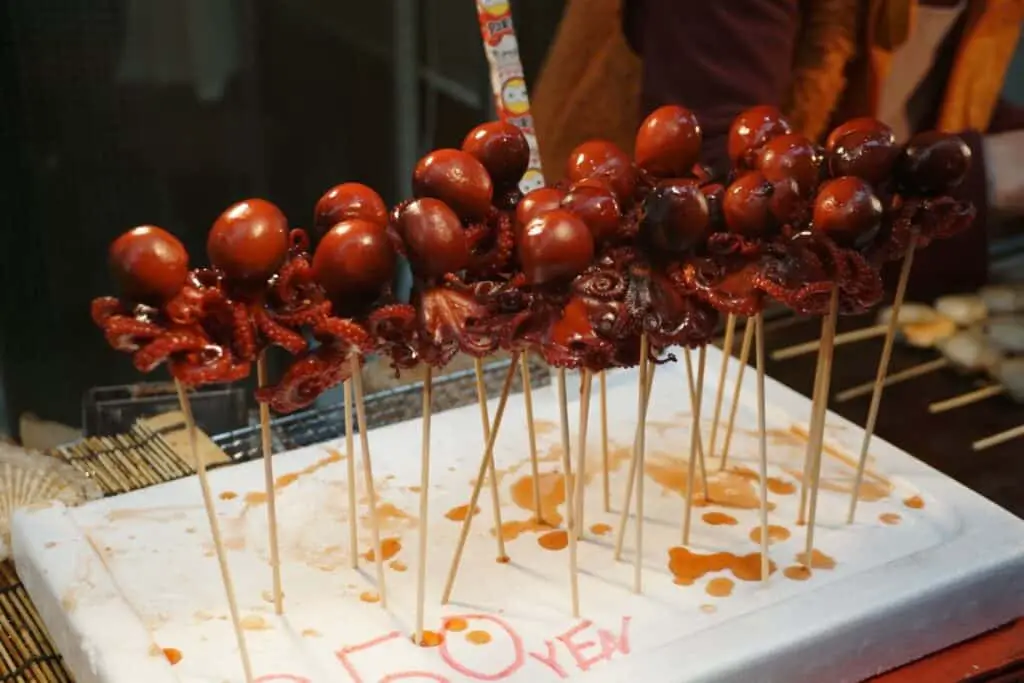
Sesame Dumplings (Gyoza)
Sweet or savory, with cheese alternatives, these small dumplings come in a range of flavors. They’re a crunchy delight and a terrific way to get a taste of the sesame flavors found in the area. Black sesame is particularly tasty, but they’re all worth a try.
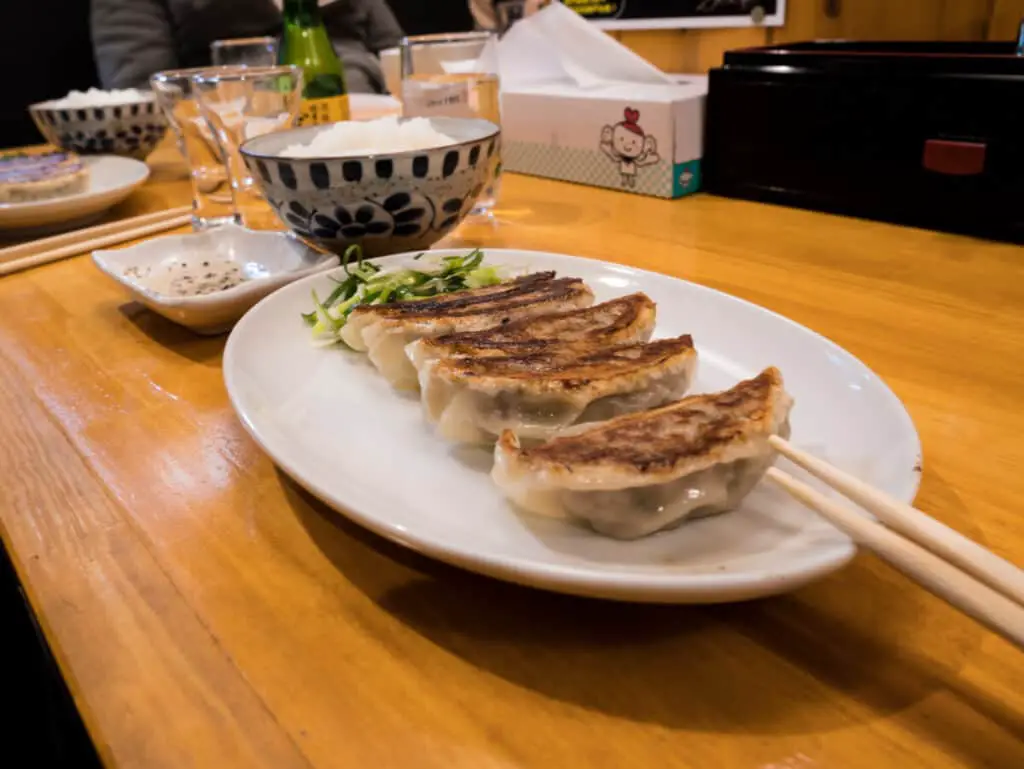
Cakes of Japanese shaped fish (Taiyaki)
Fish pancakes or Taiyaki are a popular food in Japan and throughout some part of Asia. They’re created using standard flour before being baked in a fish shaped mold. You can sample a variety of flavors, ranging from sweet bean paste, chocolate, custard, and many other flavors to find your favorite one.
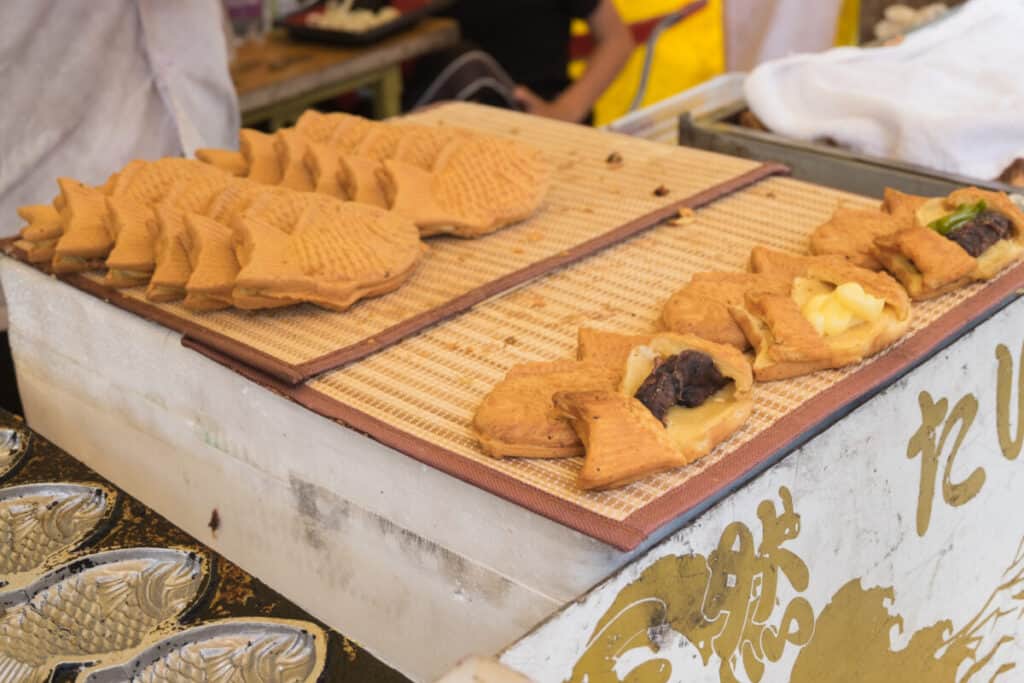
Grapefruit juice, freshly squeezed
You’ll need a drink after all this cuisine, especially in the summer. This is where freshly pulped fruit juice shines, outperforming any vending machine option. You’ll see a mound of grapefruit at one of the small kiosks outside Nishiki Shrine, and you can get one, juiced with or without pulp and served with a straw.
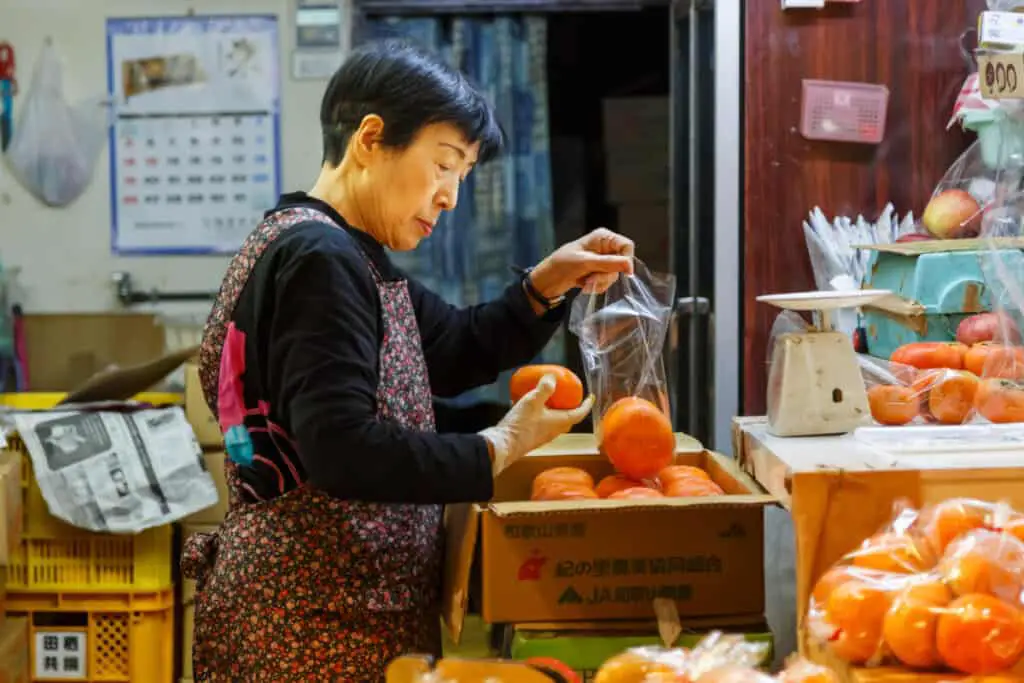
Chinese Style Dumplings
True, it’s not originally Japanese, but it’s still wonderful. To fill you up, try a few freshly cooked dumplings with traditional meat fillings.
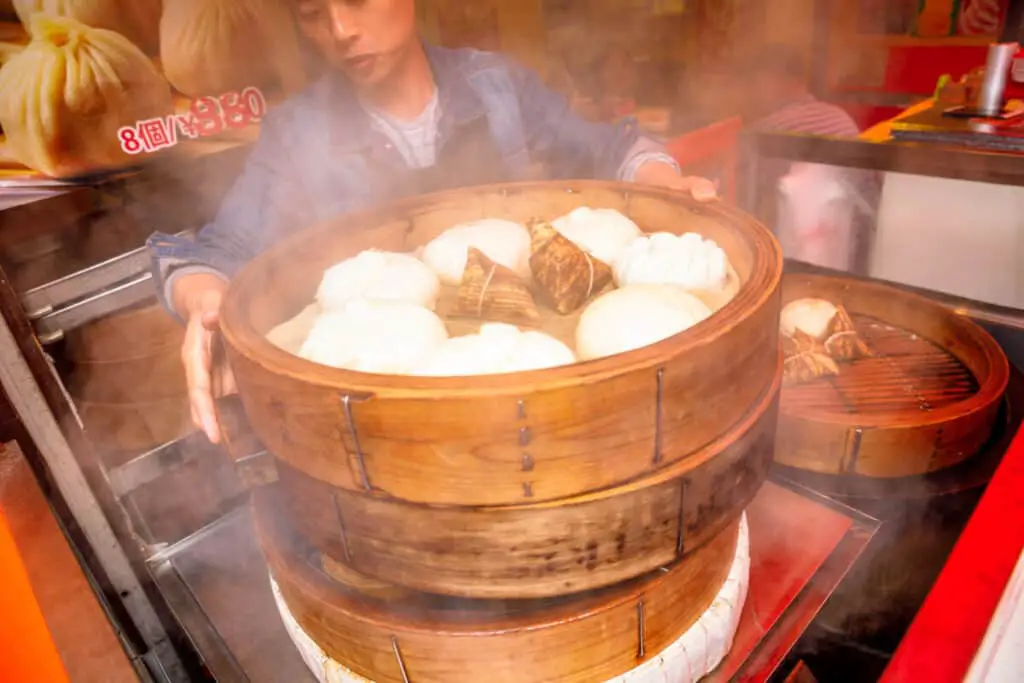
Mochi in a variety of shapes
Mochi is a confection that may be found in stores and street shops all across Japan. Mochi, a sticky rice cake, comes in a variety of shapes and sizes, all of which should be sampled.
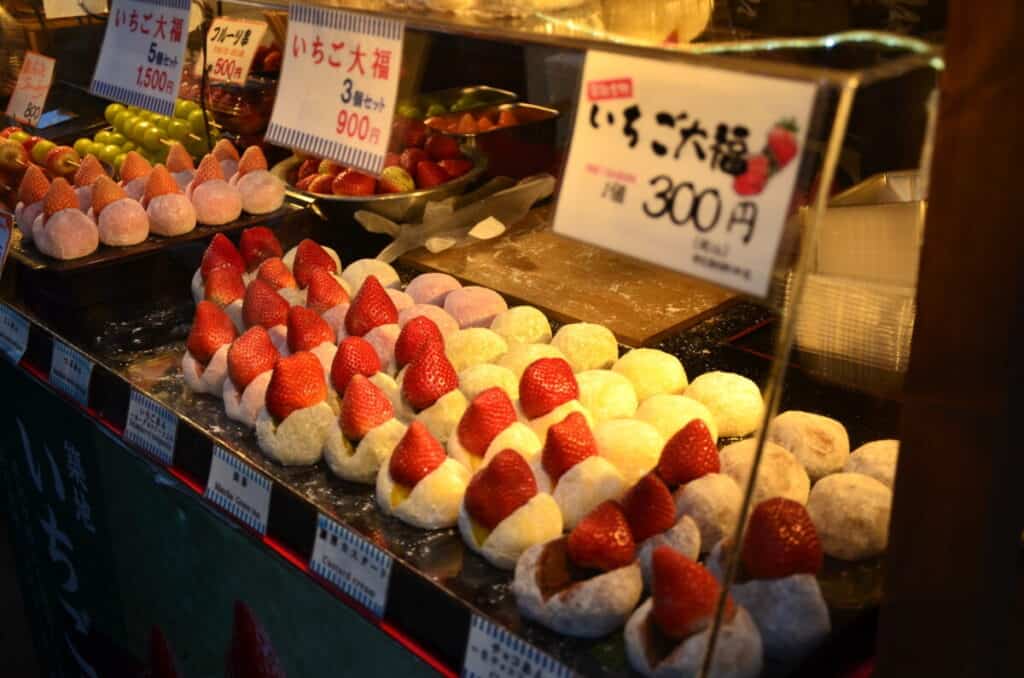
If you’ve tried one sort of mochi that you didn’t enjoy, don’t let it put you off trying others. The chewy Dango (balls on a stick) is often coated in a sweet/salty soy-sauce glaze, whereas sweet, soft mochi dusted with kinako powder (a sweet toasted soybean flour) has a peanut-like flavor.
You’re gazing at sakura mochi if it’s pink and in a leaf. If it’s white, it’s Kashiwa mochi, which is red bean paste-filled and wrapped in an oak leaf (which you shouldn’t eat). Try one, then try them all until you find your favorite.
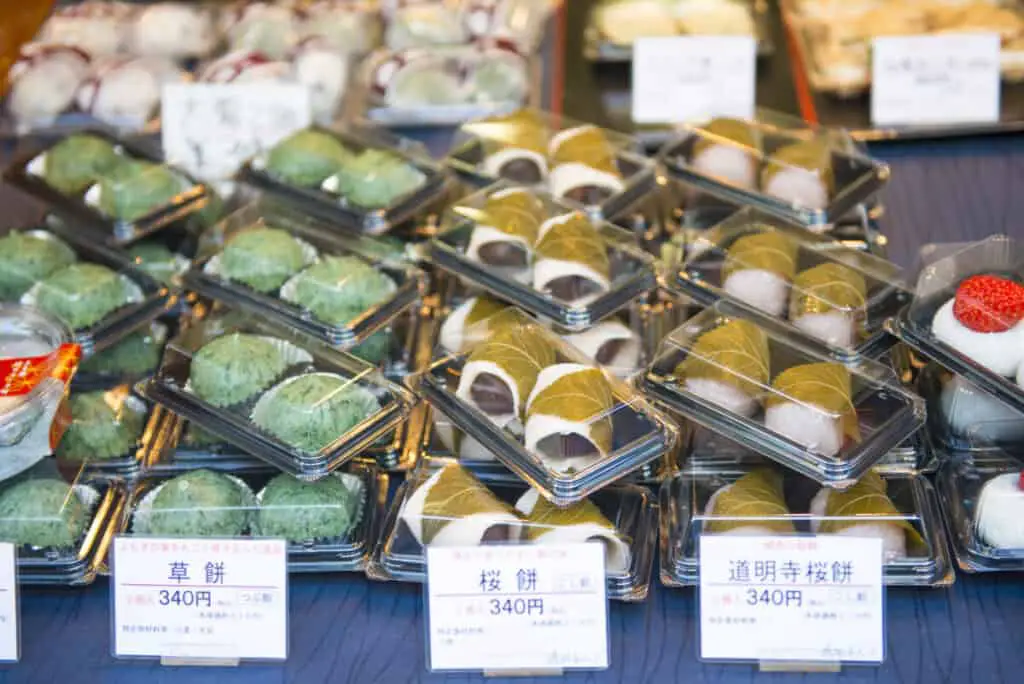
How to Get to the Nishiki Market
Getting to the Nishiki Market shopping district is simple, regardless of how you want to travel. The Hankyu Line’s Kawaramachi Station is the closest train station, while Shijo Metro Station is the closest metro station (on the Karasuma Line).
Kawaramachi Station Official Website
Shijokawaramachi or Shijotakakura are the closest bus stops to Nishiki for bus riders (both on the busy Shijo-dori shopping street). You can take Bus 4, 5, 73, 205, 17, or 26 to travel from Kyoto Station to Nishiki Market, or you can take the train.
Shijo Metro Station Location Via Google Maps
It’s a short walk from Nishiki Market to Gion via Shijo Dori across the river if you’ve arrived for an early dinner and want to see real life geisha.
FAQ
Can I go Shopping at Nishiki Market at night?
No, Nishiki Market’s hours of operation are 10 a.m. to 6 p.m., with only a few exceptions. Although there are no true night markets in Kyoto, why not take a stroll through Gion or look for festivals to attend while you’re there?
Is there a difference between Nishiki Market and Kyoto Fish Market?
While there are a few places that sell fresh fish, the largest fish market is located near Tambaguchi Station (and Kyoto Station). Wholesalers at the Kyoto Fish and Seafood Market keep busy schedules, commencing with auctions at 5 am.
Kyoto Fish And Seafood Market Location Via Google Maps
When does Nishiki Market start?
The normal Nishiki Market operating hours are from 10 a.m. to 2 p.m. While each booth and shop has its own hours, this is the most frequent.
Nishiki Market Official Website (Google Translate Needed)
Nishiki Market closes at what time?
Nishiki Market shuts about 6 p.m while each stall and shop has its own hours, they are all normally closed by 6 p.m. so we recommend arriving one to two hours before closing times if possible.
Is it possible to visit Nishiki Market on Sundays?
While some shops are open on Sundays, many others are closed on Sundays (and/or Wednesdays), so if you can visit on a different day, that would be preferable. Even if Sunday is your only chance, we recommend going as the weekend has a livelier atmosphere while you browse.
What can you do in the vicinity of Nishiki Market?
Nishiki Market is located in the heart of Kyoto, adjacent to many of the city’s most prominent attractions. It runs adjacent to the famed Shijo-dori retail street and is surrounded by a variety of intriguing vintage stores and lanes. Nijo Castle and the Kyoto Imperial Palace, as well as the Manga Museum, are located to the north.
Shijo-dori Shopping Street Via Trip Advisor
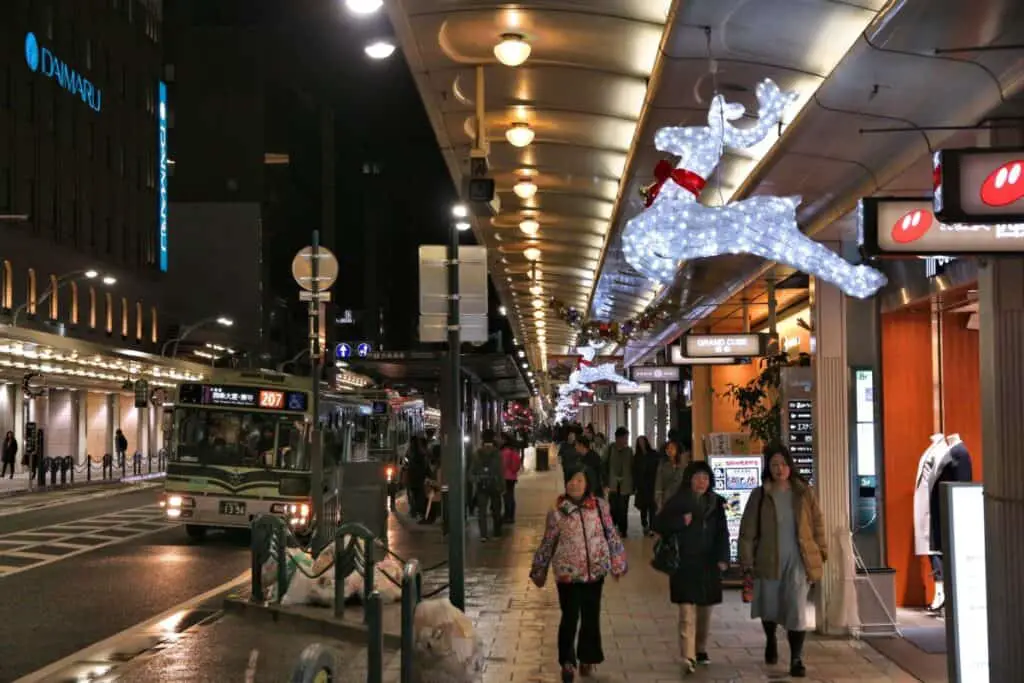
The Gion district and the famous restaurant alley Ponto-cho are to the east (perfect for spotting geisha). Kyoto Tower and Higashi Honganji Temple are located to the south. Depending on your schedule, you can either walk or take the bus to these locations.
Shrine of Nishiki Tenmangu
You’ll notice wall lanterns for the lovely Tenmangu Shrine as you leave Nishiki Market. The shrine was founded over a thousand years ago and was eventually split from Kanki-ji Temple during the Meiji period’s religious separation.
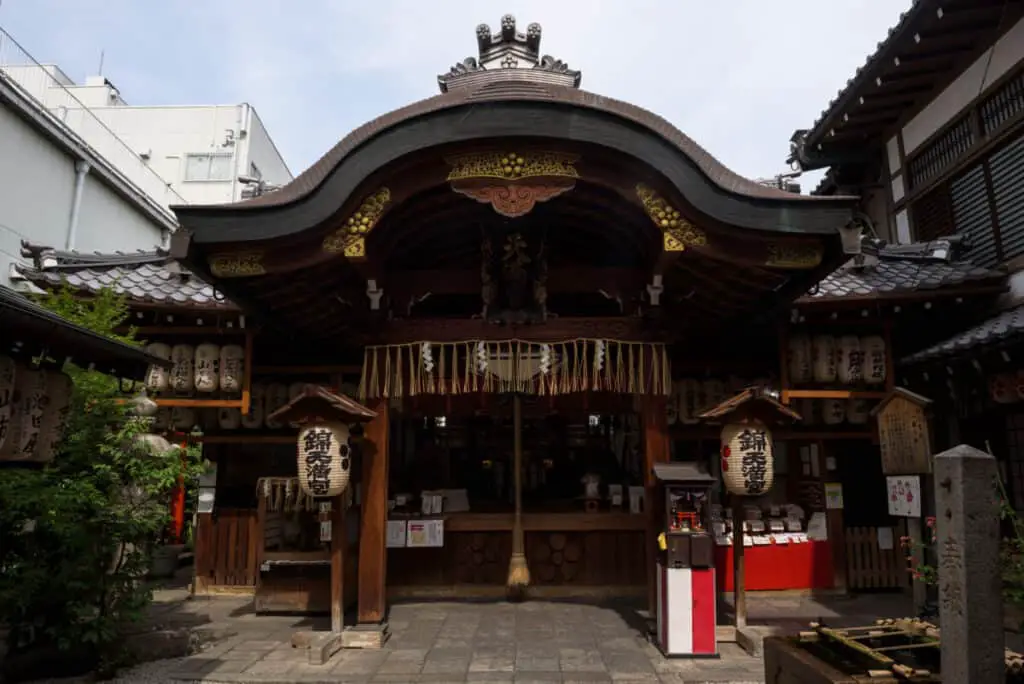
Options for vegetarians
For vegetarians, there’s Hale, a local restaurant that serves classic vegetarian and vegan dishes made with tofu or by products like yuba and okara.
Virtual Tour Of Nishiki Market

